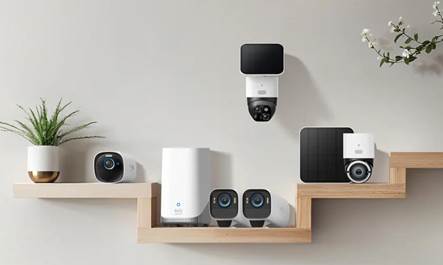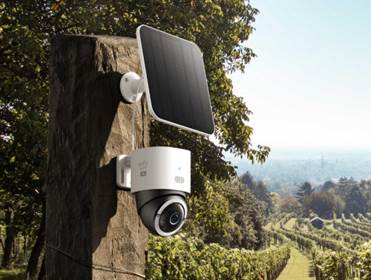Smartwatches track steps, monitor heart
rates, and deliver notifications with a flick of the wrist. Yet their influence
goes far beyond convenience. They are reshaping how people set living
boundaries—between work and rest, privacy and openness, independence and
connection—by bringing helpful data and gentle prompts into everyday moments. A
device designed to simplify tasks also invites thoughtful reflection on how
much access technology should have to personal lives. For many, smartwatches
expand freedom by promoting health, safety, and seamless communication; for
others, they serve as tools for clarifying what to share and when to pause.
Understanding how wearables redefine personal boundaries requires looking at
their impact on privacy, relationships, and daily routines—and how users actively adapt to these
changes with settings, habits, and shared expectations.

Smartwatches and Personal Privacy
Smartwatches raise important questions
about privacy because they collect sensitive signals, prompt sharing, and
influence choices about what stays private and what becomes visible. Used
intentionally, they encourage clearer, self-chosen boundaries and more
confident control over personal information.
Tracking Intimate Data
Smartwatches monitor heart rate, sleep
stages, stress indicators, and location patterns. This information can reveal
intimate aspects of daily life and well-being. Users benefit from deeper
insights that support prevention, personalized coaching, and informed
conversations with clinicians or caregivers. For example, sharing heart-rate
trends with a doctor can improve care, while sharing sleep consistency with a
partner can help align routines. Continuous metrics invite a simple question—what to keep for personal reflection and
what to share for support. Because the user chooses the threshold, the device
becomes a mirror that empowers smarter self-care without sacrificing dignity.
Sharing Information With Others
Many smartwatch features are built around
community: fitness challenges, step competitions, family reminders, and
location sharing for safety. These tools motivate healthy behavior and
strengthen trust when participants agree on what’s helpful. Location sharing on a late commute can reassure loved
ones; ring-close milestones can spark friendly encouragement across a team. The
key is clarity. Open conversations about what to share, for how long, and with
whom transform data into cooperation rather than pressure. Couples, friends,
and colleagues may draw lines differently, but the same principle applies:
define expectations early, revisit them as needs change, and let the watch
amplify support.
Managing Data Security
Beyond interpersonal sharing, people also
consider platform security. Modern smartwatches pair on-device controls with
encrypted transport, granular permissions, and lock options. Users reinforce
this protection by setting strong passcodes, reviewing app access, disabling
unused connections, and choosing privacy-respecting defaults. The combination—platform safeguards plus simple personal
practices—keeps sensitive patterns (like health trends or daily routines)
protected while still usable. Awareness turns people into active stewards of
their digital footprint, proving that convenience and privacy can reinforce
each other.
Smartwatches and Social Interaction
Smartwatches also reshape how people
interact with each other. They influence etiquette, expectations, and the line
between connection and intrusion.
Creating Constant Availability
Notifications on the wrist make people feel
reachable in a constructive way. In workplaces, this can mean smoother
coordination and fewer bottlenecks; in families, it can mean timely check-ins
and peace of mind. Availability stays healthy when users design it—filtering alerts, scheduling focus modes,
and setting quiet hours. A glanceable tap for genuine urgency is a feature;
everything else can wait for summary notifications. With a few preferences, the
watch supports responsiveness without diluting attention, helping users keep
presence in the room while staying informed.
Influencing Relationship Dynamics
In personal relationships, smartwatches can
be instruments of care. Lightweight messages strengthen connection without
demanding a full phone interaction. Shared activity goals can be a playful,
supportive way to stay healthy together. When boundaries are discussed openly—what feels supportive, what feels too
much—wearables enhance closeness. Devices like the huawei watch gt6 pro are often appreciated for structured reminders and wellness cues
that can be tailored to each person’s comfort level. The result is simple: technology remains a bridge
because the people using it shape the rules.

Shaping Social Etiquette
Smartwatches subtly evolve etiquette. A
quick glance at the wrist during a meeting or dinner can be interpreted in
multiple ways; context matters. Agreed norms—such as “focus now, summaries later,” or “notifications off in shared time”—preserve courtesy while keeping essential access. Group challenges
and shared goals should invite, not obligate. By foregrounding empathy and
preference-setting (“Is wrist-checking okay in this session?”), teams and families maintain smooth
interactions and make technology feel polite, not intrusive.
Conclusion
Smartwatches are redefining personal
boundaries by clarifying privacy choices, supporting considerate availability,
and translating values into daily modes and micro-rituals. They collect helpful
signals that encourage informed sharing and strong data stewardship. They shape
relationships by enabling quick care, timely updates, and respectful norms. And
they help routines stick—turning intentions about focus, rest, and connection into simple
settings that run quietly in the background. The device itself isn’t the final authority—users are. By choosing what to track,
what to share, and when to silence, individuals reclaim ownership of their
attention and space. Used thoughtfully, smartwatches expand freedom while
protecting personal space—encouraging balance, presence, and trust.
